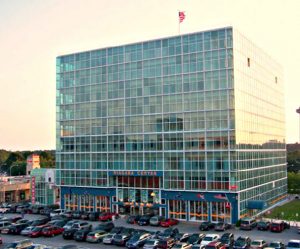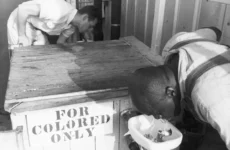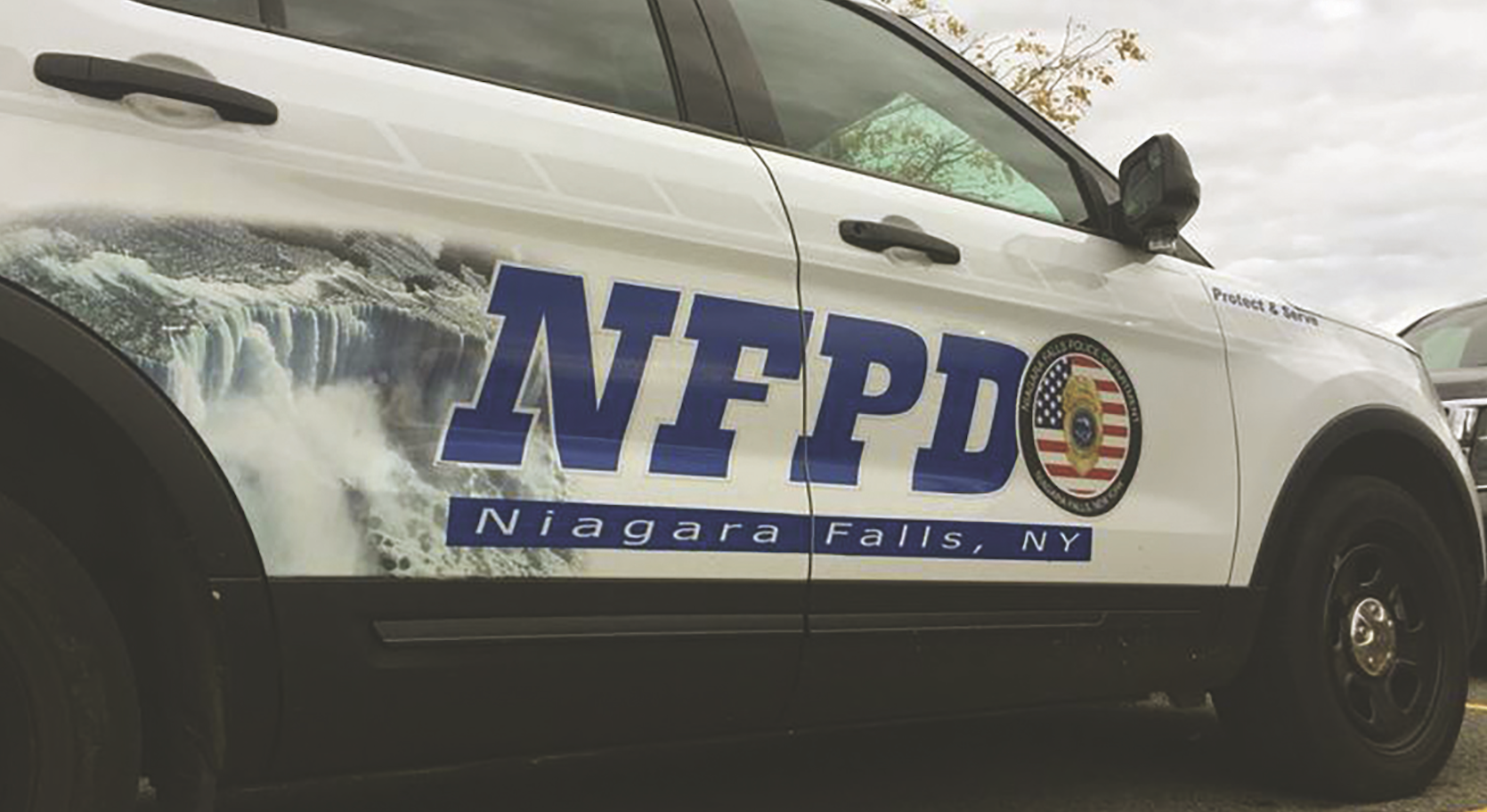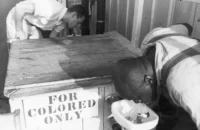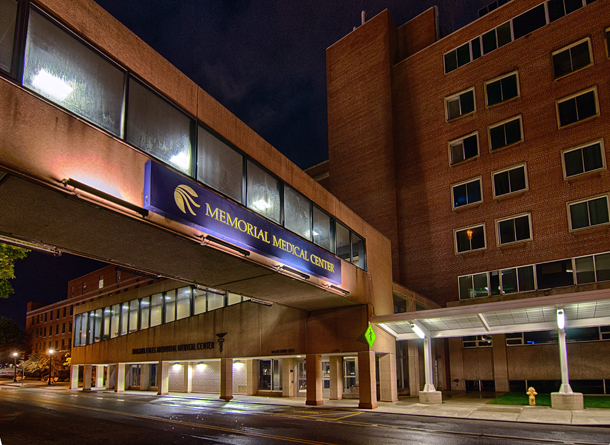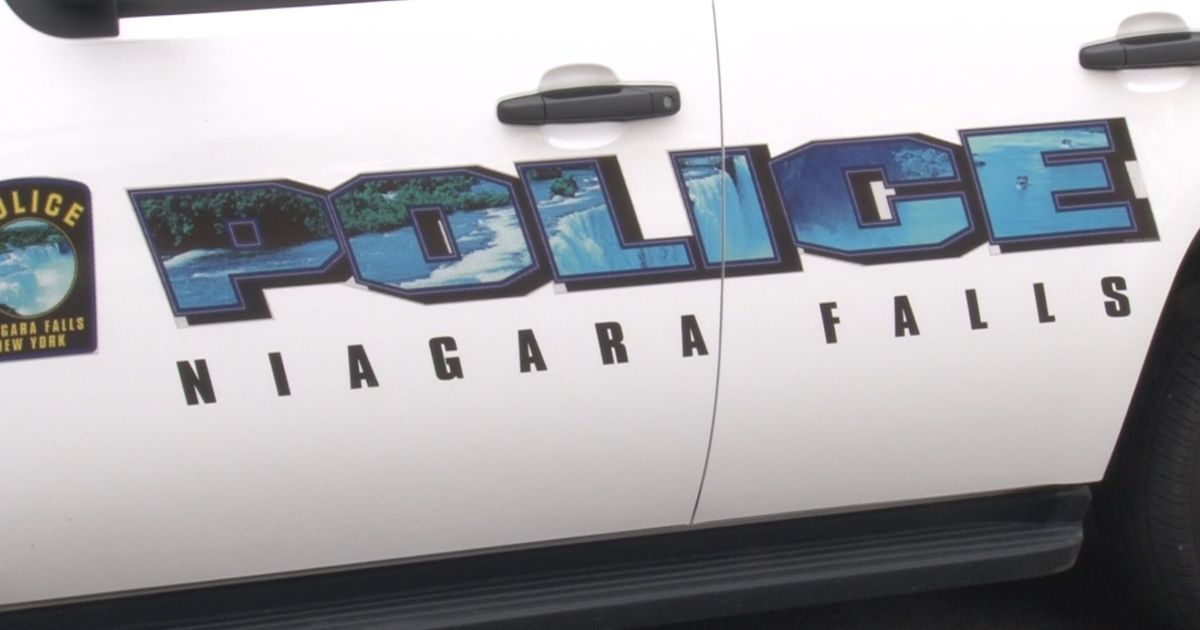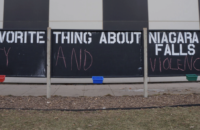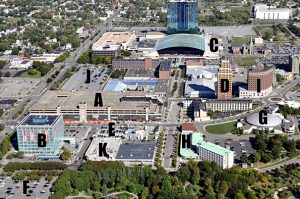
A: The proposed site of Wonderfalls. B: One Niagara. C: The Seneca Casino D: The Giacomo Hotel, E: Proposed site of the taxpayer subsidized Hamister hotel. F: The Niagara Falls State Park. G. The old Turtle Bldg. H: The Comfort Inn. I: The Old Hotel Niagara (vacant). J. City parking lot. K: Hard Rock Cafe.
Was the recent proposal by Niagara Falls Redevelopment to build a $205 million hotel on the site of the long-vacant Native American Center for the Living Arts, better known as “the Turtle,” designed to fend off a proposal by the state to seize it and other downtown properties under eminent domain?
Documents made available to the Niagara Falls Reporter and sources with knowledge of the state’s plan indicate that might be the case. In addition to the Turtle, other parcels being targeted by Gov. Andrew Cuomo include the One Niagara building, the former Niagara Club and Mark Hamister’s nondescript Hyatt Place hotel – which is still under construction.
The “WonderFalls” project, to allegedly be built by Uniland Development, is also a part of the overall scheme.
Certainly, NFR can’t be blamed. The company is merely trying to protect its investment. While city and state officials described the proposal as suspicious, one has to wonder what Mr. Cuomo, Mayor Paul Dyster or Sam Hoyt, the state’s regional director of Empire State Development, have ever actually developed.
None of them has a business background, all having sucked at the government teat for most if not all of their adult lives.
The cluster of properties, under both public and private ownership, curve past the Niagara River and Niagara Falls State Park along the edge of the city. They range from small pieces of unoccupied but prime real estate to derelict buildings that have sat neglected for years, despite their closeness to the falls, the Rainbow Bridge or the Niagara Gorge.
The use of eminent domain is nothing new in the city of Niagara Falls. Prior to the Seneca Niagara Casino opening in 2002, the state used the controversial tactic to seize numerous properties and businesses in order to create a 50-acre mini-reservation on which the casino, smoke shop, gas station and hotel are located.
Formerly, the city received between $16 million and $21 million a year from the Seneca for the property and the exclusive right to operate a casino here, but when the agreement between the tribe and the state was extended for 20 years in 2013, Gov. Cuomo forgot to include a provision that the payments continue as well.
Niagara Falls Mayor Paul Dyster said he thinks the state seizing a large portion of the most valuable property in the city he governs is a peachy idea.
“Everybody has a pretty fair idea of what properties have been developed and what properties have not,” said Mr. Dyster. “The contrast gets more and more stark year by year.”
He didn’t mention that Niagara Falls would lose more than a million dollars annually in property tax revenue should the Cuomo plan go forward.
The move was quietly announced in January as part of the second phase of Cuomo’s scandal-plagued “Buffalo Billion” economic development program. Cuomo’s Strategic Land Acquisition Program would invest state taxpayer dollars to buy up some of the properties and then solicit others to develop them. It’s part of a larger push that also includes creating 125 new acres of parkland along the gorge.
What it is, in other words, is a land grab designed to expand the state park and channel even more tourism dollars away from the city and into the Albany treasury.
Mayor Dyster maintains that government is the answer to revitalizing the city.
“I would hope that anyone out there that has been speculatively holding onto properties in downtown Niagara Falls with no intention to develop them, with hope of a windfall sometime in the future, that they would take note of the governor’s initiative,” he told reporters in January.
Gov. Cuomo proposed the land acquisition fund for underused properties earlier this year as part of Buffalo Billion II. Mr. Hoyt said the State Legislature approved $24 million for the purpose. He said the state intends to start working on land acquisitions “soon.”
The area has several high-profile properties that have been vacant or underused, according to the governor.
Joe Anderson, owner of Smokin’ Joe’s Trading Post in Sanborn, owns 16 properties in the targeted zone. In addition to vacant land and a vacant two-story building, his holdings include Smokin’ Joe’s Indian Trading Post.
Originally build in 1865 as a private residence, the former Niagara Club building at 24 Buffalo Ave. housed a private social club until it closed in 1996, and was later used as a banquet facility before the Patel family acquired it in 2009. It now has an Indian restaurant, but the Patels say they plan to redevelop it into a family-friendly dining facility within the next year.
“Those are some strategic locations,” said Christopher Glynn, CEO of Maid of the Mist Co., which also owns the Comfort Inn The Pointe across from the state park. “There will be better opportunity with the state having control of them.”
“I think it’s very important,” said William Paladino, whose company owns the Giacomo Hotel, Haeberle Plaza and the former Niagara Gazette building. “This will certainly help them provide some more shovel-ready sites to assist some of these residential neighborhoods. The blight in some of these neighborhoods is pretty extreme.”
NFR, one of the most prominent property owners in the city, has been the target of complaints for years, having assembled vast local holdings but not doing anything with them.
The state used eminent domain to take the site of the former Niagara Splash Water Park in 2006, giving it to Seneca Gaming Corp. as part of the Seneca Nation’s casino development deal.
“There’s (sic) memories in this community of the Splash Park parcel,” Mr. Dyster said. “That, of course, involved Niagara Falls Redevelopment, where they reopened the splash park briefly right before the parcel was taken for inclusion in the Seneca compact land, and appealed the price and subsequently got a major payday out of that.”
Companies called Fallsville Splash and Fallsite, in which NFR was associated with Niagara Falls attorney John P. Bartolomei, were paid $18 million for the Splash Park in 2006, a year after the park was reactivated following a decade of idleness.
The WonderFalls proposal, announced in summer 2014, has been delayed as negotiations continue between the developer and the state on a formal agreement. The ugly divorce between Uniland and Delaware North did not help matters.
Uniland Vice President Michael Montante told reporters a collective effort is needed, not a single silver bullet.
“We planned for Wonder Falls to be a piece of the solution to restoring Niagara Falls as a competitive tourism destination,” Mr. Montante said. “Other stay-extenders are needed so we can earn our fair market share of the tourists that descend upon both sides of the falls every day. “
The whole thing smells like a revival of the “urban renewal” that gutted the downtown in the 1970s, said former city Councilwoman and current Council candidate Candra Thomason.
“Urban renewal was the biggest disaster ever to hit this city, worse than Love Canal,” she said. “Now again, they’re looking to eminent domain to throw people out of their homes and shut down businesses. It doesn’t make any sense.”


